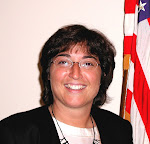

Happy 2011 to everyone! We're off on Holland America's AMSTERDAM very soon!
The Ensemble Travel Group invited Gene and I to host the world cruise! The ship is smaller than the Queen Victoria, the itinerary is slightly different and it will be wonderful to meet new people and experience new cultures! I've been a busy beaver getting ready and hope I learned a lesson or two from the last trip to limit the packing.
We've had some issues getting our visas and those are now finally complete. Our stateroom has not yet been assigned but we know we're on the ship somewhere!
I'll try to be more timely in sharing our adventures from this beautiful planet we call home...
ITINERARY:
WED 05JAN11 Sail from Fort Lauderdale, 5:00pm Florida, US
THU 06JAN11 Sea Day
FRI 07JAN11 Georgetown, Cayman Islands1 8:00am 5:00pm
SAT 08JAN11 Sea Day
SUN 09JAN11 Puerto Limon, Costa Rica 6:00am 5:00pm
MON 10JAN11 Enter Panama Canal Cristobal 5:00am
MON 10JAN11 Exit Panama Canal Balboa 7:00pm 7:00pm
TUE 11JAN11 Sea Day
WED 12JAN11 Manta, Ecuador 5:00am 5:00pm
THU 13JAN11 Sea Day
FRI 14JAN11 Callao (Lima), Peru 10:00am
SAT 15JAN11 Callao (Lima), Peru 10:00pm
SUN 16JAN11 Sea Day
MON 17JAN11 Sea Day
TUE 18JAN11 Sea Day
WED 19JAN11 Sea Day
THU 20JAN11 Easter Island, Chile 8:00am 5:00pm
FRI 21JAN11 Sea Day
SAT 22JAN11 Sea Day
SUN 23JAN11 Sea Day
MON 24JAN11 Sea Day
TUE 25JAN11 Sea Day
WED 26JAN11 Papeete, French Polynesia 7:00am 6:00pm
THU 27JAN11 Bora Bora, French Polynesia 7:00am
FRI 28JAN11 Bora Bora, French Polynesia 3:00pm
SAT 29JAN11 Sea Day
SUN 30JAN11 Rarotonga, Cook Islands 8:00am 5:00pm
MON 31JAN11 Sea Day
TUE 01FEB11 Alofi, Niue NUALF 7:00am 2:00pm
WED 02FEB11 Sea Day
THU 03FEB11 Nuku' Alofa, Tonga 9:00am 5:00pm
THU 03FEB11 Cross International Dateline
FRI 04FEB11 Sea Day
SAT 05FEB11 Sea Day
SUN 06FEB11 Auckland, New Zealand 8:00am
MON 07FEB11 Auckland, New Zealand 5:00pm
TUE 08FEB11 Tauranga (Rotorua) New Zealand 7:00am 7:00pm
WED 09FEB11 Napier, New Zealand 12:00n 6:00pm
THU 10FEB11 Wellington, New Zealand 8:00am 6:00pm
FRI 11FEB11 Lyttelton (Christchurch), NZ 7:00am 7:00pm
SAT 12FEB11 Port Chalmers (Dunedin), NZ 8:00am 5:00pm
SUN 13FEB11 Oban (Halfmoon Bay), NewZealand 8:00am 4:00pm
MON 14FEB11 Fiordland Natl Park Eastbound 8:00am 4:00pm
TUE 15FEB11 Sea Day
WED 16FEB11 Sea Day
THU 17FEB11 Hobart, Australia 7:00am 11:59pm
FRI 18FEB11 Port Arthur, Australia 7:00am 6:00pm
SAT 19FEB11 Sea Day
SUN 20FEB11 Sydney, Australia 8:00am
MON 21FEB11 Sydney, Australia 2:00pm
TUE 22FEB11 Sea Day
WED 23FEB11 Sea Day
THU 24FEB11 Cairns, Australia 7:00am
FRI 25FEB11 Cairns, Australia 3:00am
SAT 26FEB11 Sea Day
SUN 27FEB11 Madang, Papua New Guinea 12:00n 8:00pm
MON 28FEB11 Crossing the Equator
TUE 01MAR11 Sea Day
WED 02MAR11 Koror, Palau 8:00am 4:00pm
THU 03MAR11 Sea Day
FRI 04MAR11 Sea Day
SAT 05MAR11 Manila, Philippines 8:00am 6:00pm
SUN 06MAR11 Sea Day
MON 07MAR11 Hong Kong, China 7:00am
TUE 08MAR11 Hong Kong, China 10:00pm
WED 09MAR11 Sea Day
THU 10MAR11 Sea Day
FRI 11MAR11 Phu My, Vietnam 6:00am 6:00pm
SAT 12MAR11 Sea Day
SUN 13MAR11 Singapore 7:00am
MON 14MAR11 Singapore 3:00pm
TUE 15MAR11 Sea Day
WED 16MAR11 Sea Day
THU 17MAR11 Sea Day
FRI 18MAR11 Cochin, India 10:00am 8:00pm
SAT 19MAR11 Sea Day
SUN 20MAR11 Mumbai (Bombay), India 6:00am
MON 21MAR11 Mumbai (Bombay), India 5:00pm
TUE 22MAR11 Sea Day
WED 23MAR11 Sea Day
THU 24MAR11 Dubai, United Arab Emirates 8:00am
FRI 25MAR11 Dubai, United Arab Emirates 1:00pm
SAT 26MAR11 Muscat, Oman 9:00am 11:00pm
SUN 27MAR11 Sea Day
MON 28MAR11 Sea Day
TUE 29MAR11 Sea Day
WED 30MAR11 Sea Day
THU 31MAR11 Sea Day
FRI 01APR11 Safaga, Egypt 7:00am 11:59pm
SAT 02APR11 Sharm el Sheik, Egypt 6:00am 5:00pm
SUN 03APR11 Aqaba (for Petra), Jordan 6:00am 11:00pm
MON 04APR11 Sea Day
TUE 05APR11 Enter Suez Canal at Suez 6:00am
TUE 05APR11 Exit Suez Canal at Port Said 6:00pm 6:00pm
WED 06APR11 Alexandria (Cairo), Egypt 7:00am 10:00pm
THU 07APR11 Sea Day
FRI 08APR11 Kusadasi (Ephesus), Turkey 8:00am
SAT 09APR11 Kusadasi (Ephesus), Turkey 5:00pm
SUN 10APR11 Piraeus (Athens), Greece 7:00am 5:00pm
MON 11APR11 Sea Day
TUE 12APR11 Naples, Italy 8:00am
WED 13APR11 Naples, Italy 5:00pm
THU 14APR11 Civitavecchia (Rome), Italy 7:00am 8:00pm
FRI 15APR11 Sea Day
SAT 16APR11 Cartagena, Spain 8:00am 3:00pm
SUN 17APR11 Cadiz (Seville), Spain 10:00am 11:00pm
MON 18APR11 Sea Day
TUE 19APR11 Funchal (Madeira), Portugal 5:30am 3:00pm
WED 20APR11 Sea Day
THU 21APR11 Sea Day
FRI 22APR11 Sea Day
SAT 23APR11 Sea Day
SUN 24APR11 Sea Day
MON 25APR11 Sea Day
TUE 26APR11 Debark Ship Fort Lauderdale, 7:00am










































